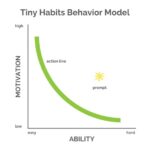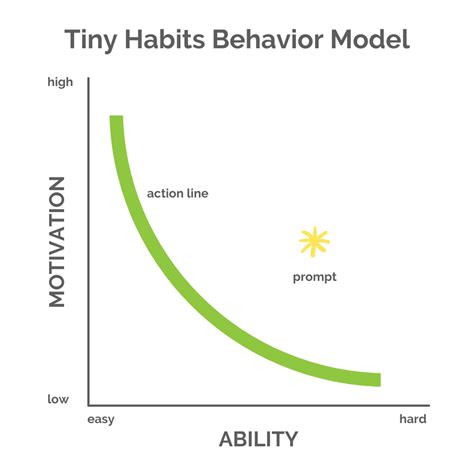
Habits often perceived as innocuous may inadvertently reveal subtle aspects of an individual’s personality, ranging from their level of organization to their social anxieties, according to a recent online discussion. These behaviors, cataloged by social media users, offer insights into how people perceive the world and interact with it, potentially unveiling more than intended.
From the way one organizes their browser tabs to the manner in which they position their phone while charging, these habits serve as unintentional indicators of deeper personality traits, according to a thread initiated on social media highlighting these common behaviors. The compilation suggests that these seemingly trivial habits speak volumes about an individual’s underlying character and mindset.
One common habit highlighted in the discussion is the way people organize browser tabs. Some individuals meticulously arrange their tabs, while others allow them to accumulate chaotically. “Keeping a lot of tabs open and planning to read them later, but never doing it” might indicate a tendency toward procrastination or an overly optimistic approach to time management, according to commenters in the thread. Conversely, the habit of closing tabs immediately after use could signal a more organized and detail-oriented personality.
Another revealing habit is how people manage their phone’s battery and charging habits. Some obsessively keep their phones fully charged, plugged in whenever possible, which users in the thread suggested could reflect anxiety or a need for control. Others are comfortable letting their phone battery drain to near zero, perhaps indicating a more relaxed or risk-tolerant disposition. The angle at which one plugs in their phone charger was also noted, with some meticulously aligning the cable and others being more haphazard, further highlighting varying levels of attention to detail.
The manner in which individuals consume food also emerged as a significant indicator. Some people eat all components of a meal separately, while others mix everything together. Those who eat items one at a time may possess a preference for order and predictability, while those who combine foods might be more open to experimentation and spontaneity. “People who eat all of one thing on their plate before moving on to the next” were described by some as potentially being more methodical in their approach to life.
Social interactions also offer a wealth of personality clues. For example, some people always arrive early to appointments, reflecting conscientiousness and respect for others’ time. Others are consistently late, potentially indicating a more relaxed attitude toward schedules or a tendency to underestimate the time required for tasks. Furthermore, the way individuals respond to phone calls—whether they answer immediately or let them go to voicemail—can indicate their level of sociability and their approach to communication.
The act of multitasking was also identified as a telling habit. Some individuals pride themselves on their ability to juggle multiple tasks simultaneously, while others prefer to focus on one task at a time. The preference for multitasking could reflect a need for stimulation or a belief in one’s own efficiency, whereas a preference for single-tasking may indicate a greater focus and attention to detail.
Even the way people organize their workspaces can provide insights. A clean and organized desk may signal a disciplined and structured personality, while a cluttered desk might suggest a more creative or flexible approach to work. However, some argue that a seemingly chaotic workspace can actually be a sign of high productivity, with the individual knowing exactly where everything is within the apparent disarray.
The language people use, including their frequency of using certain words or phrases, can also reveal personality traits. For example, consistently using positive language may indicate optimism, while frequent use of negative language could suggest a more pessimistic outlook. Similarly, the use of qualifiers like “maybe” or “possibly” might reflect a cautious or indecisive personality, while the use of strong, assertive language could indicate confidence and decisiveness.
The online discussion also touched on habits related to personal grooming and appearance. Some individuals meticulously maintain their appearance, paying close attention to details such as their clothing and hairstyle. This may reflect a desire for control or a concern for how others perceive them. Others are more relaxed in their grooming habits, perhaps indicating a greater focus on comfort and practicality.
The way people handle social awkwardness was also highlighted. Some individuals are adept at navigating awkward situations with humor and grace, while others become flustered or withdrawn. The ability to handle awkwardness may reflect social intelligence and self-confidence, while difficulty in such situations could indicate social anxiety or a lack of experience in navigating social complexities.
The discussion also explored the habit of apologizing, with some individuals frequently apologizing even for minor inconveniences, which could reflect a strong sense of empathy or a fear of conflict. Others rarely apologize, perhaps indicating a more assertive or self-assured personality.
The manner in which people approach decision-making was also identified as a revealing habit. Some individuals carefully weigh all options before making a decision, while others make quick, intuitive decisions. The former approach may reflect a preference for thoroughness and risk aversion, while the latter could indicate confidence and a willingness to take chances.
These observations are largely based on anecdotal evidence and social perceptions rather than scientific research, it is important to note. However, they align with some principles of personality psychology, which suggests that consistent behaviors can indeed reflect underlying personality traits.
According to psychological theories, personality traits are relatively stable patterns of thoughts, feelings, and behaviors that characterize an individual. These traits influence how people perceive the world, interact with others, and respond to different situations. While specific habits may not directly correspond to specific personality traits, consistent patterns of behavior can provide clues about an individual’s underlying personality.
For example, the habit of keeping a clean and organized workspace may be related to the personality trait of conscientiousness, which is characterized by orderliness, responsibility, and a desire for achievement. Similarly, the habit of being consistently late may be associated with the personality trait of impulsivity, which is characterized by a tendency to act without thinking and a disregard for rules and schedules.
The social media discussion also touches on the concept of “thin-slicing,” which refers to the ability to make accurate judgments about someone’s personality based on brief observations of their behavior. Research has shown that people can often form surprisingly accurate impressions of others based on limited information, such as their facial expressions, body language, and the way they interact with others.
While the habits discussed in the social media thread may not always provide a complete or accurate picture of someone’s personality, they can offer valuable insights into how individuals perceive the world and interact with it. By paying attention to these seemingly harmless habits, we may be able to better understand ourselves and others.
However, it is crucial to avoid making sweeping generalizations or judgments based solely on these observations. Personality is complex and multifaceted, and no single habit can fully capture the entirety of an individual’s character. It is important to consider these habits in the context of other information and to avoid stereotyping or labeling individuals based on superficial observations.
Ultimately, the social media discussion highlights the fascinating ways in which our everyday behaviors can reveal subtle aspects of our personalities. While these observations should be taken with a grain of salt, they offer a valuable reminder that even the smallest habits can provide clues about who we are and how we interact with the world.
The discussion also prompts reflection on how we perceive ourselves and others. By becoming more aware of our own habits and the habits of those around us, we can gain a deeper understanding of human behavior and improve our relationships with others. “I find it really interesting how much these little things can say about someone,” one commenter stated, capturing the essence of the online conversation.
The widespread engagement with the social media thread underscores the universal fascination with human behavior and the desire to understand ourselves and others better. These “harmless” habits, while seemingly insignificant, offer a window into the complex world of personality and provide a reminder that even the smallest details can reveal something meaningful about who we are.
Frequently Asked Questions (FAQ)
1. What are some examples of “harmless” habits that can reveal personality traits, according to the article?
According to the article, some examples include:
- How you organize your browser tabs.
- How you manage your phone’s battery and charging.
- The way you consume food (e.g., eating items separately or mixing them).
- Whether you tend to be early or late for appointments.
- How you handle social awkwardness.
- How tidy your workspace is.
2. Are the personality assessments based on these habits scientifically proven?
No, the assessments are largely based on anecdotal evidence and social perceptions from an online discussion, not on scientific research. While they might align with some principles of personality psychology, they should not be considered definitive indicators of personality traits.
3. How does the article relate these habits to personality psychology?
The article mentions that these habits can be loosely associated with concepts in personality psychology, such as conscientiousness (related to organization) and impulsivity (related to lateness). However, it emphasizes that these are not direct correlations and should be interpreted cautiously.
4. What does the article say about “thin-slicing” in relation to these habits?
The article notes that the concept of “thin-slicing” (making judgments based on brief observations) is relevant. People often form impressions based on limited information, like body language or how someone interacts, but these impressions may not always be accurate.
5. What is the main caution or takeaway from the article regarding these personality assessments?
The main caution is to avoid making sweeping generalizations or judgments based solely on these observations. Personality is complex, and no single habit can fully capture someone’s character. The article advises considering these habits in context and avoiding stereotypes.
Extended Article with More Depth and Context:
Innocuous Actions, Significant Signals: Unveiling Personality Through Everyday Habits
Habits, those often-unnoticed actions that punctuate our days, may be more revealing than we realize. According to a recent online discussion spurred by social media, seemingly “harmless” habits can inadvertently expose subtle aspects of an individual’s personality. From the meticulous organization of browser tabs to the way one meticulously aligns their phone charger, these behaviors provide unexpected insights into how individuals perceive and interact with the world, potentially unveiling more than intended.
The compilation of these habits, which originated in a popular social media thread, suggests that these trivial habits speak volumes about an individual’s underlying character and mindset. As society increasingly relies on nonverbal cues to evaluate and interpret others, these subtle behaviors become a form of unconscious communication.
Digital Footprints: Habits in the Digital Realm
One of the most frequently cited habits from the social media discussion revolves around the management of browser tabs. In an age where the internet is an indispensable tool for work and leisure, how one handles the digital clutter of open tabs can be surprisingly indicative.
“Keeping a lot of tabs open and planning to read them later, but never doing it,” as one commenter noted, might suggest a tendency toward procrastination, an overly optimistic approach to time management, or a fear of missing out. This behavior could also reflect a person who struggles with prioritizing tasks or who is easily distracted by the allure of new information. Conversely, the habit of closing tabs immediately after use could signal a more organized, efficient, and detail-oriented personality. Individuals who prioritize order and efficiency may find the visual clutter of multiple open tabs distracting, leading them to promptly close them after use.
Another habit related to digital devices is how individuals manage their phone’s battery and charging. Some obsessively keep their phones fully charged, plugging them in whenever possible, even for short periods. Commenters in the thread suggested this could reflect anxiety, a need for control, or a dependence on technology. Constantly ensuring a full battery could stem from a fear of being disconnected or missing important communications. On the other hand, some individuals are comfortable letting their phone battery drain to near zero, perhaps indicating a more relaxed, risk-tolerant, or less tech-dependent disposition. These individuals might prioritize other aspects of their lives over constantly monitoring their device’s battery level. The angle at which one plugs in their phone charger—whether meticulously aligned or haphazardly inserted—also adds a layer of insight, potentially reflecting varying levels of attention to detail and conscientiousness.
Gastronomic Personalities: Eating Habits as Clues
The manner in which individuals consume food also emerged as a significant indicator of personality. Some people eat all components of a meal separately, savoring each item individually, while others mix everything together, creating a culinary blend. Those who eat items one at a time may possess a preference for order, predictability, and control, reflecting a structured approach to life. They might appreciate the distinct flavors and textures of each food item and prefer to experience them in a deliberate, sequential manner. In contrast, those who combine foods might be more open to experimentation, spontaneity, and novel experiences. “People who eat all of one thing on their plate before moving on to the next” were described by some as potentially being more methodical and systematic in their approach to life, suggesting a preference for routine and a careful, step-by-step approach to tasks.
Social Signals: Interpersonal Habits
Social interactions provide a wealth of personality clues. For example, some people consistently arrive early to appointments, reflecting conscientiousness, respect for others’ time, and a strong sense of responsibility. This behavior could also stem from a desire to avoid anxiety associated with being late or a commitment to punctuality as a sign of professionalism. Others are consistently late, potentially indicating a more relaxed attitude toward schedules, a tendency to underestimate the time required for tasks, or difficulties with time management. This behavior could also reflect a more spontaneous and less structured approach to life.
Furthermore, the way individuals respond to phone calls—whether they answer immediately, let them go to voicemail, or screen them carefully—can indicate their level of sociability, their approach to communication, and their comfort with interruptions. Those who answer immediately may be highly sociable, responsive, and eager to connect with others. They might prioritize immediate communication and value being available to others. Those who let calls go to voicemail might prefer to filter their communications, prioritize their current tasks, or experience anxiety about answering calls.
Multitasking vs. Single-Tasking: Work Habits
The act of multitasking was also identified as a telling habit. Some individuals pride themselves on their ability to juggle multiple tasks simultaneously, while others prefer to focus on one task at a time, dedicating their full attention to it. The preference for multitasking could reflect a need for stimulation, a belief in one’s own efficiency, or a high level of cognitive flexibility. These individuals may thrive in fast-paced environments and enjoy the challenge of managing multiple priorities. Conversely, a preference for single-tasking may indicate a greater focus, attention to detail, and a desire for deep work. These individuals might find multitasking distracting and prefer to concentrate on one task at a time to maximize their productivity and quality of work.
Even the way people organize their workspaces can provide insights into their personality. A clean and organized desk may signal a disciplined, structured, and detail-oriented personality, reflecting a preference for order, efficiency, and control. These individuals may find a cluttered environment distracting and believe that a tidy workspace promotes productivity and clarity of thought. In contrast, a cluttered desk might suggest a more creative, flexible, and unconventional approach to work. Some argue that a seemingly chaotic workspace can actually be a sign of high productivity, with the individual knowing exactly where everything is within the apparent disarray. These individuals might thrive in a less structured environment and find that a certain level of clutter stimulates their creativity and allows them to access information more easily.
Language and Communication Styles:
The language people use, including their frequency of using certain words or phrases, can also reveal personality traits. For example, consistently using positive language may indicate optimism, resilience, and a positive outlook on life. These individuals may tend to focus on the positive aspects of situations and express their thoughts and feelings in an upbeat manner. In contrast, frequent use of negative language could suggest a more pessimistic outlook, a tendency to focus on problems and challenges, or a higher level of anxiety or stress.
Similarly, the use of qualifiers like “maybe” or “possibly” might reflect a cautious, indecisive, or risk-averse personality. These individuals may prefer to avoid making definitive statements and hedge their bets to minimize the risk of being wrong. The use of strong, assertive language could indicate confidence, decisiveness, and a willingness to take risks. These individuals may express their opinions directly and confidently and be more comfortable making bold statements.
Grooming and Appearance: Self-Presentation
The online discussion also touched on habits related to personal grooming and appearance. Some individuals meticulously maintain their appearance, paying close attention to details such as their clothing, hairstyle, and accessories. This may reflect a desire for control, a concern for how others perceive them, or a strong sense of self-presentation. These individuals may place a high value on looking their best and believe that their appearance is an important reflection of their personality and values. Others are more relaxed in their grooming habits, perhaps indicating a greater focus on comfort, practicality, or a less conventional approach to self-expression. These individuals may prioritize comfort and functionality over strict adherence to social norms and be less concerned with external appearances.
Navigating Social Awkwardness:
The way people handle social awkwardness was also highlighted as a telling habit. Some individuals are adept at navigating awkward situations with humor, grace, and empathy, while others become flustered, withdrawn, or uncomfortable. The ability to handle awkwardness may reflect social intelligence, self-confidence, and a strong ability to read social cues. These individuals may be skilled at diffusing tense situations and making others feel comfortable. Difficulty in such situations could indicate social anxiety, a lack of experience in navigating social complexities, or a higher level of self-consciousness.
Apologies and Conflict Resolution:
The discussion also explored the habit of apologizing, with some individuals frequently apologizing even for minor inconveniences, which could reflect a strong sense of empathy, a fear of conflict, or a tendency to take responsibility for others’ feelings. These individuals may be highly sensitive to the needs and feelings of others and prioritize maintaining harmony in their relationships. Others rarely apologize, perhaps indicating a more assertive, self-assured, or independent personality. These individuals may be less concerned with pleasing others and more focused on expressing their own needs and opinions.
Decision-Making Styles:
The manner in which people approach decision-making was also identified as a revealing habit. Some individuals carefully weigh all options, gather extensive information, and analyze potential consequences before making a decision, while others make quick, intuitive decisions based on gut feelings or limited information. The former approach may reflect a preference for thoroughness, risk aversion, and a desire to make informed choices. These individuals may value accuracy and precision and be willing to invest the time and effort needed to make the best possible decision. The latter could indicate confidence, a willingness to take chances, or a belief in one’s own intuition.
Psychological Perspectives: Linking Habits and Personality
While these observations are largely based on anecdotal evidence and social perceptions rather than rigorous scientific research, they align with some principles of personality psychology. Personality psychology suggests that consistent behaviors can indeed reflect underlying personality traits, providing clues to how individuals think, feel, and behave across various situations.
Psychological theories define personality traits as relatively stable patterns of thoughts, feelings, and behaviors that characterize an individual. These traits influence how people perceive the world, interact with others, and respond to different situations. The “Big Five” personality traits (Openness, Conscientiousness, Extraversion, Agreeableness, and Neuroticism) provide a framework for understanding individual differences in personality and how these traits influence behavior.
For example, the habit of keeping a clean and organized workspace may be related to the personality trait of conscientiousness, which is characterized by orderliness, responsibility, and a desire for achievement. Similarly, the habit of being consistently late may be associated with the personality trait of impulsivity, which is characterized by a tendency to act without thinking and a disregard for rules and schedules. Extroversion could be linked to always answering the phone immediately, reflecting a desire to engage with others and maintain social connections.
Thin-Slicing and Impression Formation:
The social media discussion also touches on the concept of “thin-slicing,” a term coined by Malcolm Gladwell in his book “Blink.” Thin-slicing refers to the ability to make accurate judgments about someone’s personality, intentions, or abilities based on brief observations of their behavior or appearance. Research has shown that people can often form surprisingly accurate impressions of others based on limited information, such as their facial expressions, body language, the tone of their voice, and the way they interact with others.
However, it’s crucial to acknowledge the limitations of thin-slicing and the potential for bias and error. While first impressions can be informative, they should not be relied upon as the sole basis for judging someone’s character.
Cautions and Considerations:
While the habits discussed in the social media thread may offer valuable insights into how individuals perceive the world and interact with it, it is crucial to avoid making sweeping generalizations or judgments based solely on these observations. Personality is complex, multifaceted, and influenced by a wide range of factors, including genetics, environment, culture, and personal experiences.
No single habit can fully capture the entirety of an individual’s character. Stereotyping or labeling individuals based on superficial observations can lead to inaccurate and unfair judgments. It is important to consider these habits in the context of other information and to avoid making assumptions about someone’s personality based on a limited set of behaviors.
Conclusion: A Reflection on Human Behavior
Ultimately, the social media discussion highlights the fascinating ways in which our everyday behaviors can reveal subtle aspects of our personalities. These “harmless” habits, while seemingly insignificant, offer a window into the complex world of human behavior and provide a reminder that even the smallest details can reveal something meaningful about who we are and how we interact with the world.
The discussion also prompts reflection on how we perceive ourselves and others. By becoming more aware of our own habits and the habits of those around us, we can gain a deeper understanding of human behavior and improve our relationships with others. This self-awareness can foster empathy, improve communication, and lead to more meaningful connections with others. “I find it really interesting how much these little things can say about someone,” one commenter stated, capturing the essence of the online conversation.
The widespread engagement with the social media thread underscores the universal fascination with human behavior and the desire to understand ourselves and others better. These “harmless” habits, while seemingly insignificant, offer a valuable reminder that even the smallest details can reveal something meaningful about who we are. The online discussion underscores the importance of mindful observation and the recognition that every action, no matter how small, can provide valuable insights into the human experience. This can help us better understand the complexities and intricacies of human behavior.
![Nostalgia is Served: [Restaurant Name] Returns After 30 Years!](https://kilaupesona.com/wp-content/uploads/2025/06/unnamed-file-281-150x150.jpg)








